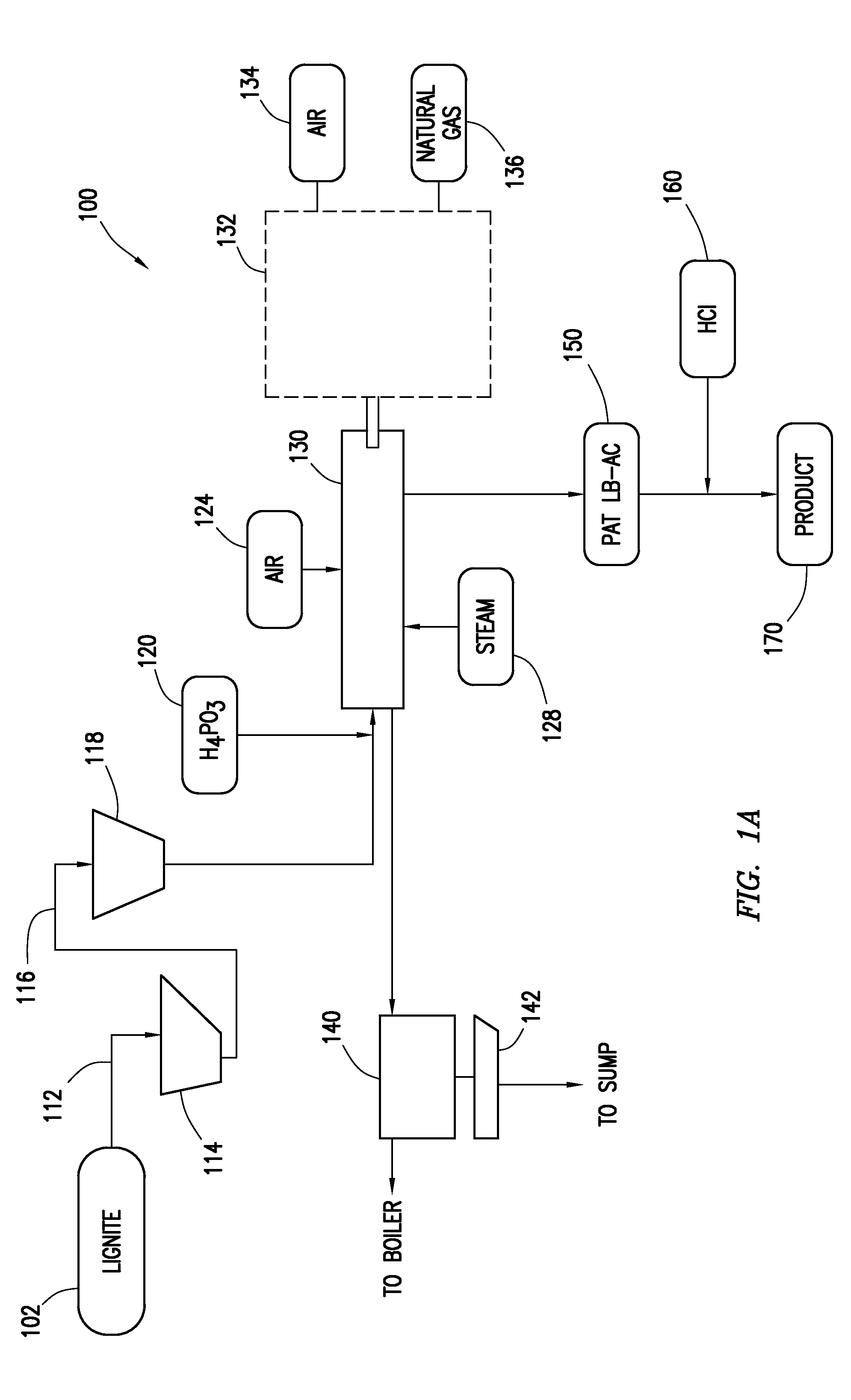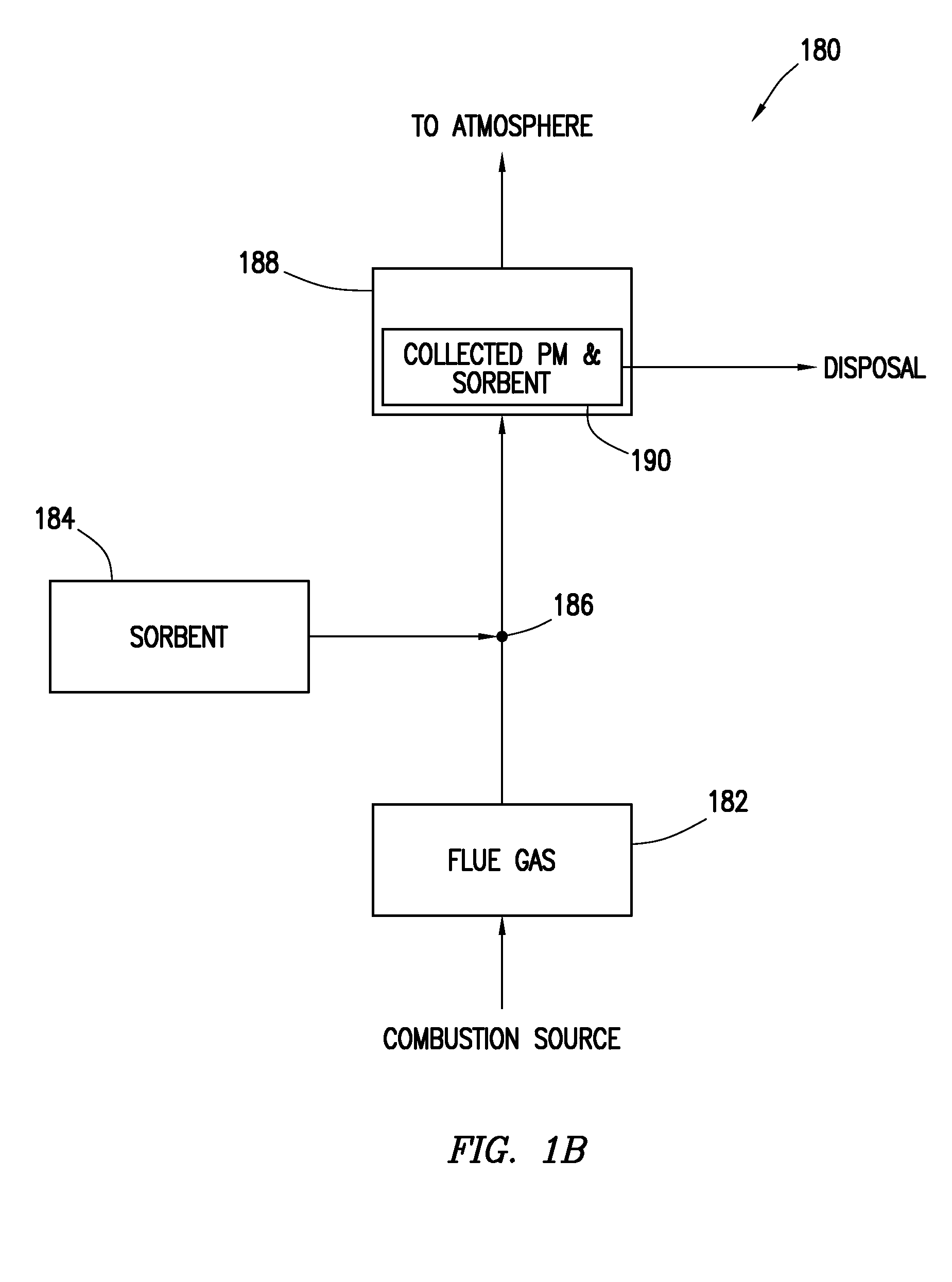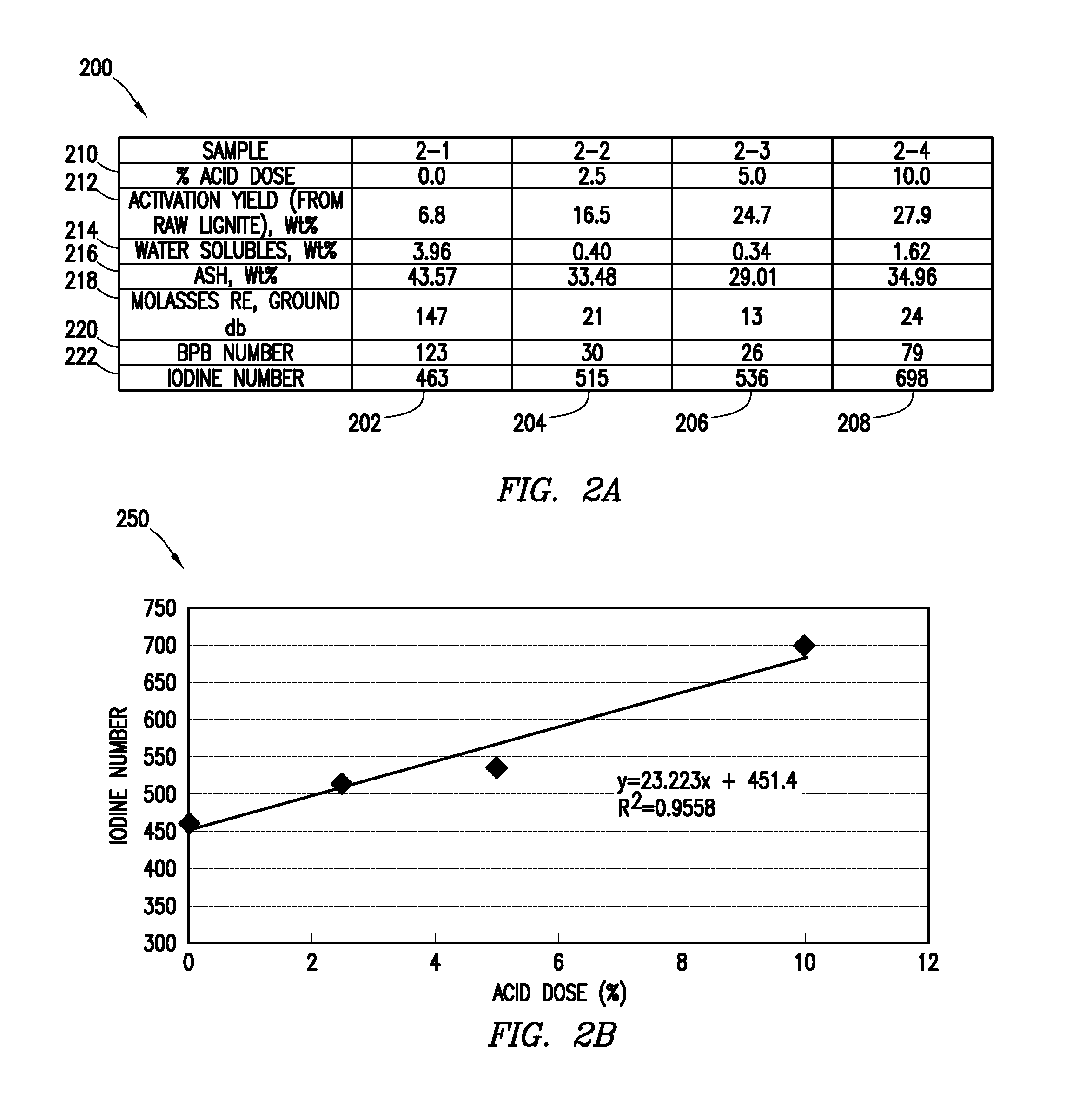Phosphoric acid treatment of carbonaceous material prior to activation
a technology of phosphoric acid and carbonaceous material, which is applied in the direction of dispersed particle separation, other chemical processes, separation processes, etc., can solve the problems of insufficient microporosity or mesoporosity of ac from certain sources to adsorb small molecular weight impurities, and disadvantages of certain acs, so as to reduce the disadvantages and eliminate the disadvantages of ac the effect of the performance of the sorb
- Summary
- Abstract
- Description
- Claims
- Application Information
AI Technical Summary
Benefits of technology
Problems solved by technology
Method used
Image
Examples
Embodiment Construction
[0049]Embodiments of the present disclosure and its advantages are best understood by referring to FIGS. 1 through 11 of the drawings.
[0050]Sorbents may be used to adsorb liquids or gases. Activated carbon (“AC”) is a commonly used sorbent. Raw material made to create AC may come from a plurality of sources. Certain raw materials may result in ACs with less microporosity and / or mesoporosity than other ACs, which may make these ACs with lesser microporosity and / or mesoporosity unlikely to be purchased for or used in applications requiring removal of small molecular weight impurities. Developing a method to increase the microporosity and / or mesoporosity of these ACs may reduce or eliminate this disadvantage and increase the marketability of ACs produced from these raw materials.
[0051]Phosphoric acid (H3PO4) treatment of a raw material before activation may be an effective means to increase microporosity or mesoporosity of the resulting AC, where increasing the microporosity increases ...
PUM
| Property | Measurement | Unit |
|---|---|---|
| weight | aaaaa | aaaaa |
| temperature | aaaaa | aaaaa |
| diameter | aaaaa | aaaaa |
Abstract
Description
Claims
Application Information
 Login to View More
Login to View More - R&D
- Intellectual Property
- Life Sciences
- Materials
- Tech Scout
- Unparalleled Data Quality
- Higher Quality Content
- 60% Fewer Hallucinations
Browse by: Latest US Patents, China's latest patents, Technical Efficacy Thesaurus, Application Domain, Technology Topic, Popular Technical Reports.
© 2025 PatSnap. All rights reserved.Legal|Privacy policy|Modern Slavery Act Transparency Statement|Sitemap|About US| Contact US: help@patsnap.com



